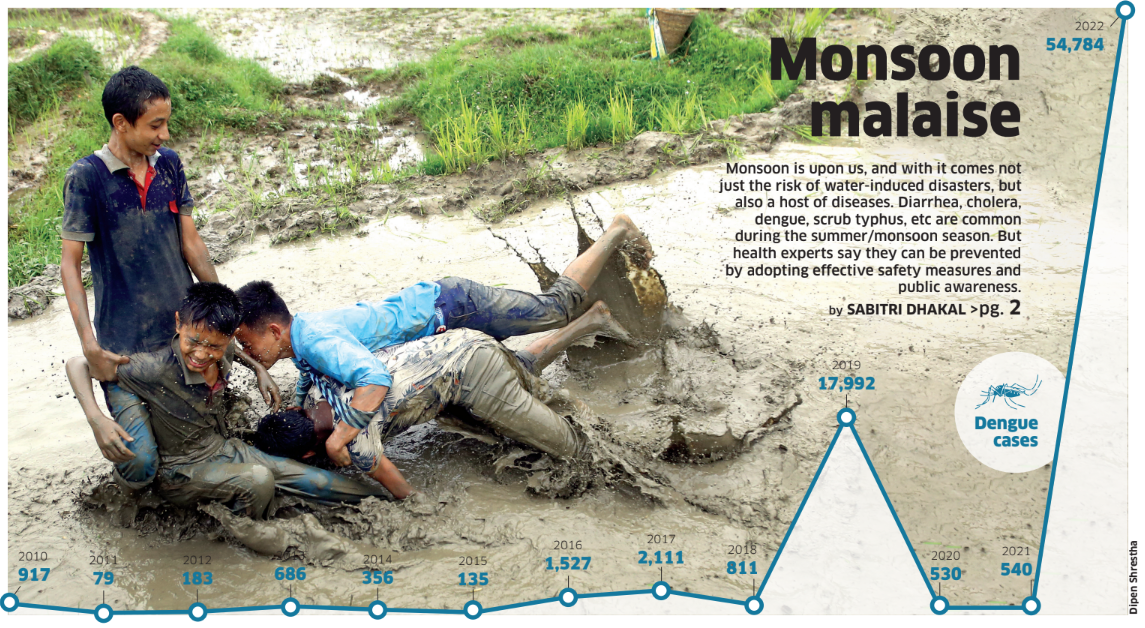Power export from Nepal to Bangladesh could start from third week of July
The much-talked-about electricity export from Nepal to Bangladesh could start from the third week of July. With the preparation for signing a tripartite agreement among Nepal, India, and Bangladesh reaching the final stage, government officials are hopeful for a milestone electricity trade deal. The top officials of the Energy Ministry and Nepal Electricity Authority (NEA) said preparations are being made to export Nepali electricity to Bangladesh from the start of the new fiscal year through a tripartite agreement within a week or two. India had finally given its nod for the use of an Indian transmission line for exporting Nepali electricity to Bangladesh during Prime Minister Pushpa Kamal Dahal’s recent India visit. Nepal and Bangladesh had agreed for a tripartite agreement with India for the export of 40 MW of electricity from Nepal to Bangladesh during the fifth meeting of the secretary-level Joint Steering Committee (JSC) on energy cooperation held in Dhaka in the third week of May. As Indian transmission lines had to be used to materialize the power export, both countries had decided to bring the Indian agency on board. As per the understanding, NEA, Bangladesh Power Development Board (BPDB), and NTPC Vidyut Vyapar Nigam Limited (NVVN) of India will finalize a tripartite deal. Energy Ministry Spokesperson Madhu Bhetuwal said that preparation for the tripartite deal has reached the final stage. “It will be signed soon,” said Bhetwal. Similarly, a senior NEA official said that the final draft of the power purchase agreement (PPA) has been prepared and sent to Bangladesh. “Once Bangladesh gives its nod on the PPA, the tripartite agreement will be signed,” he said. Nepal's quest for finding a market for its electricity beyond India was further emboldened after Bangladesh expressed readiness to import 40-50 MW of power from Nepal during the energy secretary-level JSC meeting of the two countries held in Kathmandu in the last week of August. Nepal and Bangladesh last year agreed to request India for the passage of 40-50 MW of electricity from Nepal to Bangladesh through the existing transmission infrastructure of India. Final agreement on long-term power deal in Indian cabinet The draft of the final agreement on long-term electricity trade between Nepal and India has also reached the Indian cabinet. Once the agreement is endorsed by the Indian cabinet, the final agreement on long-term electricity trade between India and Nepal will be signed. Nepal and India had signed an initial agreement between Nepal and India at the energy secretary level on June 2 in New Delhi. During Prime Minister Pushpa Kamal Dahal's India visit, the southern neighbor agreed to buy 10,000 MW of electricity from Nepal in the next 10 years. Nepal has been requesting the southern neighbor for a long-term power trade deal arguing that an inter-government agreement would lock in the market and end the unpredictability of the Indian market’s availability for electricity from Nepal in the long run. As Nepal faces the risk of spillage of electricity in this monsoon season, it is also all set to export 200 MW of electricity to India under a medium-term five-year deal. The 200 MW deal is outside the existing quota of 452.6MW which Nepal is selling in the Indian energy exchange. The NEA has forwarded the list of five projects -Solukhhola (Dudhkoshi), Super Madi, Upper Balephi ‘A’, Dordi Khola, and Upper Chaku ‘A’—under this deal to India. The export of 200 MW will begin once the Indian authorities approve these projects, according to NEA.
Morel mushrooms: Pathway to prosperity
India’s prime minister Narendra Modi has a particular fondness for a mushroom known as ‘Phuikhane chyau’ in our local language. For thousands of years, shepherds in the foothills of the Himalayas have been barbecuing (phui) and eating (khane) this mushroom, and that is how it got its name. This mushroom is also called ‘Guchi’ in Hindi. It’s reported that the Indian PM regularly enjoys guchi curry. Whenever Indian media covers these guchi mushrooms (known commonly as morel mushrooms), they often associate it with their prime minister and label it as ‘one of the most expensive vegetables.’ There are several stories of how the Indian PM might have acquired a taste for this particular mushroom. There are reports that during his teenage years Modi lived as a monk in the caves of the Himalayas for two years. This may be where he first encountered or developed a taste for the mushroom. Alternatively, he may have started consuming it during his tenure as the in-charge of party affairs in Himachal Pradesh (where these mushrooms are found aplenty) in the mid-1990s. Morel mushrooms are found in the wild in different parts of the world. They are said to be found in temperate climates near coniferous forests in various areas such as the USA, China, Bhutan, Pakistan, Afghanistan, Nepal, etc. The months of March and April mark the season for foraging Morel mushrooms in Nepal, which are known locally as khoya chyau, guchi chyau, phuikhane chyau, and chhohada chyau within different communities. But what makes this mushroom so special, and what significance does it hold for Nepal? Well, it happens to be Nepal’s most highly exported wild edible mushroom. Due to its unique taste and texture, there is a substantial demand for morel mushrooms in the European market, making morel foraging a lucrative source of income for rural communities. Currently, Nepal exports approximately nine tons of these mushrooms annually. However, by implementing sustainable foraging practices, there is potential to greatly increase export. Morchella esculenta, the variety of Morels commonly found in Nepal, is known by various names: morel, common morel, true morel, morel mushroom, yellow morel, sponge morel, Molly Moocher, haystack, and dryland fish. It gets its various eccentric names due to its unique appearance—it looks like a honeycomb with hollow white insides. Morels have many health benefits. They are rich in vitamin-D, and also contain carbohydrates, proteins, vitamins, minerals, and organic acid while being low in cholesterol. They can be substituted for meat items in a diet as they are very nutrient dense and have been known to decrease cholesterol levels and give more energy. They are said to have tumor-inhibiting properties, and also have antioxidants that protect the body from free radicals which cause heart diseases, Parkinson’s disease, type 1 and type 2 diabetes etc. Morel mushrooms are highly prized for their unique flavor and meaty texture. It can be consumed fresh and dried as well. However, they cannot be eaten raw as they cause stomach cramps. The flavor of morels is valued highly in French cuisine, and there is a huge demand for morels in the European market. Morels are great with sauteed vegetables, or cooked in butter to be made into sauces for grilled meats and pastas. It’s also used as a pizza topping. Dried morels are best used in cooking risottos, or for making sauces. Their availability is often seasonal. While March to April is considered morel season, back in the day we used to call looking for morels ‘hunting’ but I have since learned that the correct term is ‘foraging’. These wild mushrooms are foraged from wooded areas during the spring months, while March to June is usually morel foraging season in Nepal. They typically grow in areas that have recently experienced forest fires, and are found in the springtime when temperatures begin to warm. Morels are typically found in temperate climates and can be found in a variety of habitats, including wooded areas, grasslands, and even in urban areas. A study done in 2019 by Nepali scientists found that in Nepal morel foraging is mostly done in the far western region. The foragers take months to forage morels, dry them and sell them to local shopkeepers who then sell them at regional markets. These morels are then exported via Nepalgunj and Mahendranagar routes to other countries. The foragers have to sell them at a meager price compared to what the mushrooms fetch in international markets. Due to its versatility, these morels fetch a high price in international markets. It is reasonable to assume that foragers who do much of the hard work must be given a fair price. If you are interested in foraging for morels in Nepal, it’s important to be aware of the local regulations and laws related to foraging. You may also want to consult local experts or experienced foragers to learn more about where to look for morels and how to identify them. It’s also important to take precautions when foraging for mushrooms, as some varieties can be poisonous or have adverse effects if consumed in large quantities. Always be sure to properly identify the mushrooms you collect and only consume those that are safe for consumption. We have been hearing time and again of families dying of poisoning caused by consuming poisonous mushrooms. This creates a precarious situation where foraging for mushrooms requires expertise in land and plants as well. Foraging for any type of mushroom can be dangerous, so people who forage have to be able to distinguish between edible and non-edible mushrooms. Overall, morel foraging can be a fun and rewarding activity, but it’s important to approach it with caution. It can be dangerous if overexploitation leads to unsustainable practices and turns harmful to the environment. The practice of morel foraging in Nepal has not had a significant environmental impact, unlike in China, where Morel exports have nearly quadrupled in recent years. Indian media outlets have criticized the Chinese, alleging them of cultivating and selling morels as ‘wild’ mushrooms. However, the viability of these claims remains uncertain. Nonetheless, we can raise concerns regarding the sustainability of this process. Shifting homewards, the potential of these mushrooms for the benefit of Nepal’s economy has often been overlooked. Nepal is home to more than 22,200 Community Forestry Users Groups, which have primarily focused on timber production. However, there is an opportunity to shift their attention toward Non-Timber Forest Products (NTFPs), including foraging for Morel mushrooms. This shift in focus can serve as a pathway to prosperity, opening up new avenues for sustainable livelihoods and economic growth.
Govt’s lax anti-tobacco measures
According to the STEPS Survey of Nepal 2019, around 27,000 deaths occur annually from tobacco use, which comprises about 14.9 percent of all deaths. Despite this huge loss of life, tobacco related law and taxation policy remain dismal. The government is reluctant to increase tobacco tax due to the pressure from big tobacco companies. This year too, Finance Minister Prakash Sharan Mahat did not heed the experts’ suggestion to increase the tobacco tax by 40 percent. Today, tobacco products are readily available to anyone including the minors, and they are being openly consumed in public places. The Tobacco Control and Regulation Act 2011 law bars tobacco use in public places, but the law is hardly followed or enforced. The law also prohibits sales and distribution of tobacco products within a 100-meter radius of health and educational institutions. Again, there is no one to implement the rule. Shops and tea stalls outside hospitals, schools and colleges openly sell tobacco products. Health journalist Kalpana Acharya says it is common to see shops and street vendors selling cigarettes and other tobacco products outside major hospitals such as Kanti Children’s Hospital, TU Teaching Hospital, Bir Hospital, and Patan Hospital, among others. Public health experts say there is no designated agency to implement the anti-tobacco laws and regulations. Ideally, the Ministry of Health and Population should be coordinating with the Ministry of Home Affairs and its subordinating bodies to implement the laws on tobacco use. But this has not been happening. There is also a lack of awareness among the public about the laws that are in place, because the government has not taken any initiative to let people know. Journalist Acharya says running campaigns on the health risks of tobacco use alone will not help. She says many shopkeepers and street vendors she talked with didn't know that there was an anti-tobacco law in the country, and that it was illegal to sell cigarettes and other tobacco products near hospitals and educational institutions. It shows that the government simply is not bothered to discourage the use of tobacco products, because it runs against the interest of tobacco companies. This is also why tobacco tax in Nepal is among the lowest in the whole of South Asia. Global experiences show that increasing tobacco excise taxes and prices is the most effective, cost-effective, and result-oriented measure for reducing tobacco use. But the government is not ready to take the path. Health experts and stakeholders that ApEx talked to as part of the Annapurna Media Network’s ‘No Tobacco Drive’ also agree that substantially increasing the tobacco tax is the sure-fire way to discourage tobacco use and save lives. They say doing so would also help generate more revenue in the form of tobacco tax. But government officials fear that raising the tax on tobacco will only promote illicit trade. However, studies have shown that tobacco blackmarket will not be that big of a problem if the tobacco tax is raised significantly. Nepal is also obliged to raise its tobacco tax as per the WHO Framework Convention on Tobacco Control, of which it is a party. The framework talks about raising tobacco excise taxes so that they account for at least 70 percent of retail prices. So by setting low tax on tobacco, the Nepal government is flouting the rules set by the WHO. The UN health agency has also suggested the MPOWER policy package for country-level implementation of effective interventions to reduce the demand for tobacco. The six evidence-based components of MPOWER are: monitoring tobacco use and prevention policies; protect people from tobacco smoke; offer help to quit tobacco use, warn about the dangers of tobacco; enforce ban on tobacco advertising, promotion and sponsorship; and raise taxes on tobacco. Nepal has failed to comply with most of these intervention measures. Experts say for the effective implementation of the anti-tobacco law, there should be a proper interaction between government agencies and the tobacco industry, which is not happening now. To improve the situation, there is also a need for sensitization among the political parties. Our lawmakers rarely speak about those matters in the Parliament to press the government to increase taxes and implement the law. They are more focused on securing development projects in their core constituency and less on the issues related to public health. It takes commitment and cooperation from all sides if we are to create a tobacco-free, healthy society. HIghlights
- Monitoring tobacco use and prevention policies
- Protect people from tobacco smoke
- Offer help to quit tobacco use,
- Warn about the dangers of tobacco;
- Enforce ban on tobacco advertising, promotion and sponsorship
- Raise taxes on tobacco.
Mindset: The driver of our behavior
An essential realization I’ve had with time is that although we would ideally opt to live drama-free lives, we somehow contribute to the same problems that create drama instead. For instance, we tell our family members to remain calm and deal with things patiently whenever they go wrong, but it doesn’t even take us a minute to lash out at the very same people we advise about staying mindful. Many might think that the problem here is behavior. If we changed our behavioral approach, things would automatically improve. Well, maybe. Are we missing out on the bigger picture here, though? As far as I’ve learned and experienced, it’s not behavioral change that can help us improve things but something more significant. It’s what we call ‘mindset.’ Let me illustrate this with an example. Until a couple of years ago, when I had to travel in an overcrowded public bus, I dreaded the process. Even before getting into the vehicle, I thought about how it would ruin my day. I thought, “I never signed up for this,” “I don’t have to go through this again!” When these thoughts accompanied me on my commute, I would naturally get triggered because of the inconveniences I had to go through. “Idiot, idiot, idiot!” that is what my inner voice would ask me to tell the driver who sped through the road to overtake another bus, to the co-driver who called out to people to get down at their bus stops in a shrill and loud voice, and to the passengers who pushed past me. I used to get so triggered that even if I could help some co-passengers, I didn’t do so on purpose. Some people would sometimes enter with heavy backpacks, and although I would be seated occasionally, I would not take those from them. I used to start acting out of vengeance, “If they don’t take my bag when I hardly manage to stand properly, why should I do them a favor?” It wasn’t all too bad all the time. I used to catch myself when I had such toxic thoughts. I reminded myself that all the other passengers faced as much inconvenience as I did. Even the driver and the co-driver must deal with so many people throughout the day, so was there any point in perpetuating bitterness and seeing people around me as my enemies? Hence, I left seats for fellow passengers whenever I could endure standing. I would offer to hold a struggling passenger’s bag while I got a seat. But, despite these, it was just so easy to slip and go down that negative spiral the very next day. Mindset drives behavior Now, if we look at the above example, although I tried to change my behavior, I could not bring sustained changes in my thought process and approach toward people. It happens because of a simple yet complex reason. It’s our mindset that drives behavior and not the other way around. So, no matter how often I tried to remain positive, I would always hate the commute because I never entirely developed the mindset to persevere. And, when I talk about mindset, we must acknowledge Martin Buber’s philosophical wisdom on the ways of being. Buber demonstrated that at all times, no matter what we’re doing or communicating, we are always in the world in an ‘I-It’ way or ‘I-Thou’ way. Based on Buber’s philosophy, we can consider that there are two mindsets: self-focused and impact-focused. The two mindsets With a self-focused mindset, we perpetuate the ‘I-It’ way of being. We see other people not as people but as objects. Unlike the self-focused mindset, when we operate with an impact-focused mindset, we’re in the ‘I-Thou’ way of being. With an impact-focused mindset, we see people like ourselves with needs, objectives, and challenges like ours. Catching yourself in the self-focused mindset Learning about this concept opened me to seeing other people as people on the commute. Honestly, so many instances still disgusted me when things didn’t go a certain way and when I saw public transportation mismanaged. However, this concept has helped me catch myself quickly when I become self-focused. It helps when I ask myself, ‘On a scale of 1 to 10, how self-focused I am right now?’ The higher the score, the more effort I put in to consider the ‘needs, objectives, and challenges’ of the individuals I don’t see as people during that time. There have still been times when I have been unmistakably self-focused—at home, at work, with friends and loved ones. Despite the challenges to remain impact-focused, what helps stick to it is a simple self-reminder: “How can I not contribute to making things worse?” Implications of an impact-focused Mindset I know what you must be thinking, does an impact-focused mindset mean stepping down and letting the other person have things their way? It certainly isn’t, but think about this: when two people are self-focused, they see each other as objects. Neither of them would listen to each other’s perspectives. Neither would be alive to the other person’s needs, objectives, and challenges. What would such patterns lead to? Perhaps it will sabotage the relationship for good. It’s essential that even if other people are self-focused, we take a step forward to understand what’s really troubling them instead of taking things personally. Of course, it’s easy to tell ourselves so. But if we think about it—most of the things people tell us aren’t because certain things are wrong with us. Inward expressions come from unmet needs, unfulfilled objectives, and unyielding challenges. If we can open our eyes to spotting these in the other person, we will be less concerned about proving ourselves right and more about having peace in relationships. As Byron Katie – an American speaker and author who teaches a method of self-inquiry known as ‘The Work of Byron Katie’ or simply as ‘The Work,’ says, “Placing the blame or judgment on someone else leaves you powerless to change your experience; taking responsibility for your beliefs and judgments gives you the power to change them.” The author is the Linchpin at My Emotions Matter, an education initiative that helps individuals and teams learn the mindset and skills of Emotional Intelligence. You can learn more at myemotionsmatter.com



















